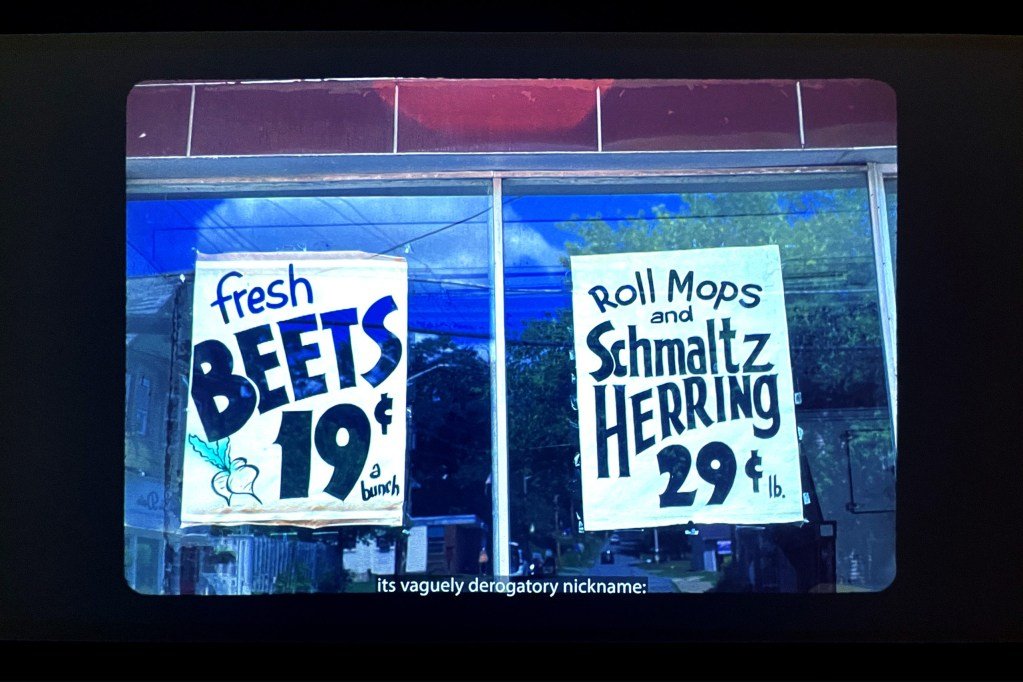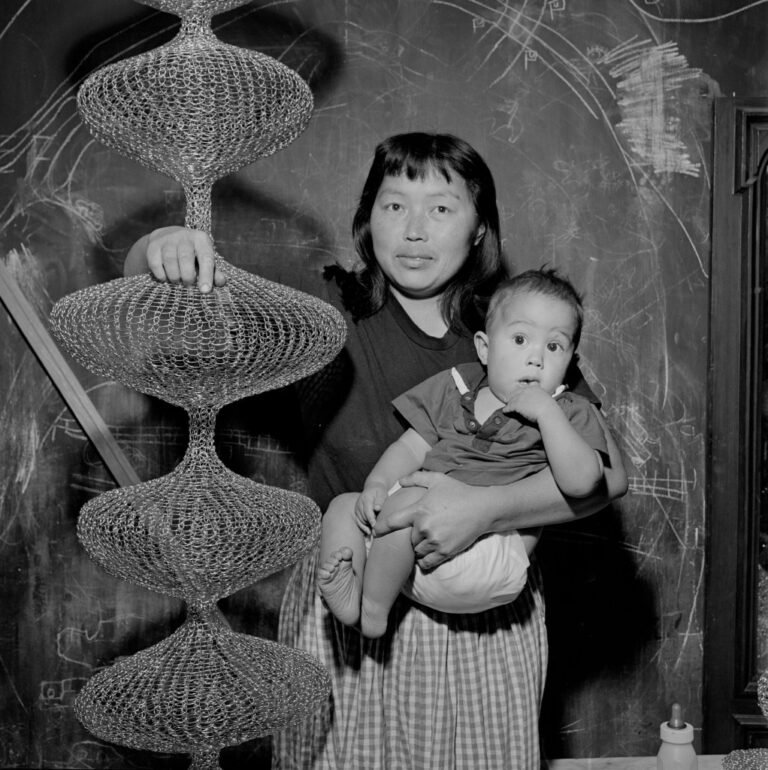

LOS ANGELES — From the 1920s to ’60s, the Catskill Mountains, with its woody resorts and bungalows, were a playground for middle-class Jewish families traveling Upstate from New York City. Dads grilled while lounging mothers shielded beehive hairdos from their children’s poolside splashing, and dinners were marked by heaps of sour cream on plates of offal.
By the 1970s, the glory days of the “Borscht Belt” — a derogatory nickname derived from the Russian soup that many Ashkenazi Jews favored — had faded. Post-World War II, Jewish people found greater social acceptance, and could travel to vacation destinations by plane. The Borscht Belt would be reduced to postcards and Polaroids.
Marisa J. Futernick uses these mementos as fodder for fantasy in her solo exhibition Away in the Catskills: Summers, Sour Cream, and Dirty Dancing at the Skirball Cultural Center, reconstructing her grandmother’s vacations through family photographs, a video essay, and an installation. Having never been to the Catskills as a child, she uses the images and souvenirs as writing prompts, crafting fictional dialogue that playfully depicts Jewish-American leisure.

As such, Futernick employs a technique theorist Saidiya Hartman calls “critical fabulation,” which aims to help marginalized people reclaim their narrative from the colonial voices that largely wrote history, often mischaracterizing, overlooking, or stereotyping disempowered subjects. In Futernick’s dialogue, she gets to shape a more authentic representation of Jewish culture, and play a role in her family’s depiction in the future.
In the photo series Dirty Dancing (2017), which makes up the majority of the exhibition, Futernick blows up old slice-of-life photos, like her then-teenage uncles posing on a diving board, and her grandmother looking up from her Mah Jongg quartet. In “Do the Twist,” just below a photo of a man mid-dive, floating above unbroken water, are two lines of dialogue on a simple white background: “‘The fish is dry.’ ‘But they give a good portion. I like a nice portion.’” There are no attributions to the text, but one imagines they come from two women sitting on a white bench in the background. The simple exchange taps into the highs and lows of budget-conscious travel, of a class that could afford a vacation, but not luxury.

In the video essay “I Never Learned to Play Mah Jongg” (2025), Futernick juxtaposes the archives with present-day images of the Catskills. Now, the roads are lined with decaying buildings, and the small Jewish population in the area is predominantly Hasidic, a much more observant sect than the conservative Jews who vacationed there earlier. In one part, Futernick shows snapshots of old deli advertisements, mentioning that her family doused spaghetti with ketchup instead of tomato sauce. The anecdote perfectly encapsulates the assimilated Jewish experience: doing all one can to be seen as an American, but still not getting it quite right, remaining ostracized from the gentile majority.
The Mah Jongg set also reappears in the installation “Bam, Crack, Rock, Pop” (2025), an arrangement of keepsakes on three floating shelves. Near it lies a small, pearl-beaded handbag, from which Andes mints spill out. The green-foiled candies were also a large part of my childhood, and I had never considered them canonically Jewish until now. But it should’ve been no surprise, because my own grandmother, who also spends her days kvetching over Mah Jongg with her sisters, seems like a carbon copy of Futernick’s bubbie.
Away in the Catskills is highly personal, but also universal for its demographic. As younger generations of Jewish people, like me, choose a more secular path, enclaves for Jewish Americans disappear. Futernick’s archives and fictions are an invaluable script for preserving a fading culture.



Away in the Catskills: Summers, Sour Cream, and Dirty Dancing continues at Skirball Cultural Center (2701 North Sepulveda Boulevard, Los Angeles, California) through August 31. The exhibition was curated by Cate Thurston.


